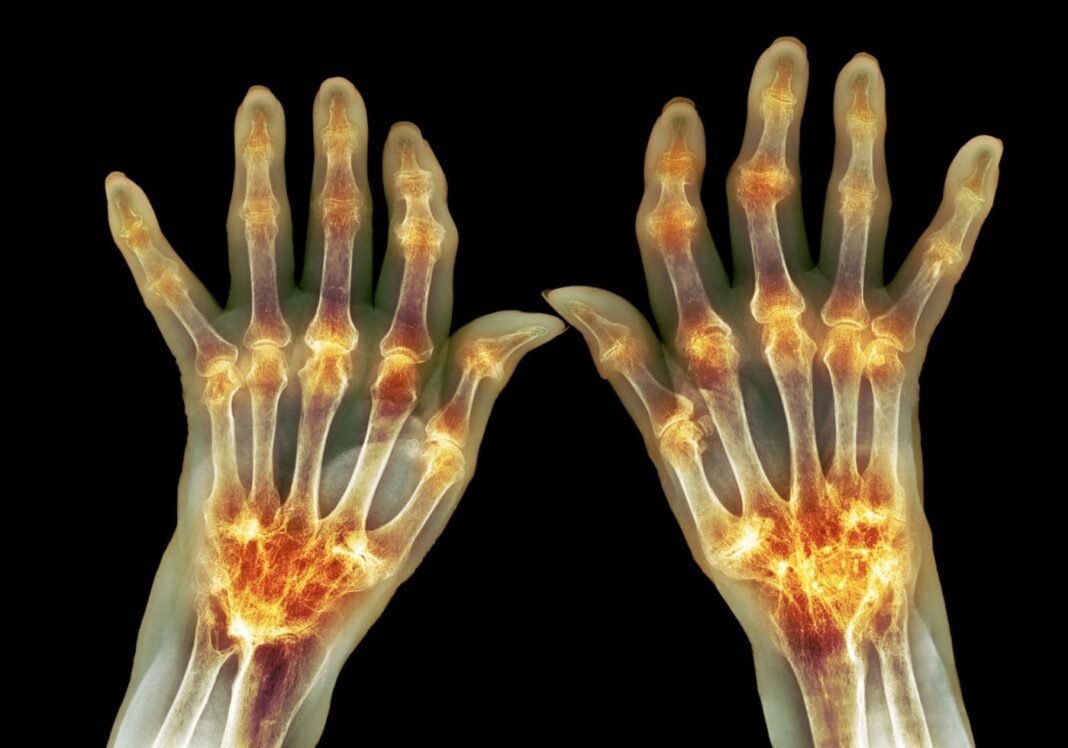Researchers at the University of Toronto’s Faculty of Dentistry and the National Jewish Health in Denver report a new drug discovery that could be useful to combat inflammation of all varieties and shows promise in fighting acute respiratory illnesses such as COVID-19.
Called TAT CARMIL1, the drug is actually a combination of two naturally occurring peptides that, when combined, work together to penetrate a cell’s membrane in order to dampen an acute inflammatory response. In this first ex vivo study “The Leucine-Rich Repeat Region of CARMIL1 Regulates IL-1-Mediated ERK Activation, MMP Expression, and Collagen Degradation”, published in Cell Reports, the peptide reduced collagen degradation by up to 43 percent. If deployed early enough, the researchers say, the peptide could allay some of the worst damage caused by acute inflammatory responses.
“CARMILs are large, multidomain, membrane-associated proteins that regulate actin assembly and Rho-family GTPases, but their role in inflammatory signaling is not defined. Tandem mass tag mass spectrometry indicated that, in fibroblasts, CARMIL1 associates with interleukin (IL)-1 signaling molecules. Immunoprecipitation of cells transfected with CARMIL1 mutants showed that the leucine-rich repeat (LRR) region of CARMIL1 associates with IL-1 receptor type 1 (IL-1R1) and IL-1 receptor-associated kinase (IRAK),” write the investigators.
“Knockout of CARMIL1 by CRISPR-Cas9 reduced IL-1-induced ERK activation by 72% and MMP3 expression by 40%. Compared with CARMIL1 wild-type (WT), cells expressing mutant CARMIL1 lacking its LRR domain exhibited 45% lower ERK activation and 40% lower MMP3 expression. In fibroblasts transduced with a cell-permeable, TAT CARMIL1 peptide that competed with IL-1R1 and IRAK binding to the LRR of CARMIL1, collagen degradation was reduced by 43%.
“As the LRR of CARMIL1 evidently regulates IL-1 signaling, CARMIL1 could become a target for anti-inflammatory drug development.”
Acute infections can cause cytokine storms, a term that has gained in popularity during the COVID-19 pandemic. This storm is a natural defense response to an acute infection. Cytokines are a type of immune response cell, but when the body becomes overwhelmed by infections, it can release an unregulated flood of cytokines into the body.
In those instances, infection-busting cytokines can cause severe damage in the body, everything from holes in the lung tissue to vascular damage and blot clots, with the most acute cases causing death.
Greg Downey, MD, pulmonologist, professor and executive vice president, academic affairs in the department of medicine at the National Jewish Hospital, who co-authored the study, calls the peptide discovery “exciting.”
Here’s how it works: the peptide combines a segment of a naturally occurring protein, CARMIL1, with a peptide vehicle, TAT, that brings the CARMIL1 directly into the cell. That enables the CARMIL1 to calm the inflammatory storm. The CARMIL peptide effectively blocks a family of cytokines (interleukin1) from signaling and reproducing in vast quantities.
“There are a lot of people looking at these areas, but this study gives the first indication of how these CARMIL proteins are involved with this pathway,” Downey adds.
But what makes the discovery so unique is how precise it is, he adds. The TAT CARMIL1 peptide targets two receptors, sticking to both the cell’s surface and its cell substrate, where it adheres to other cells.
“The two receptors necessary for it to work supplies an unusual level of specificity,” explains Chris McCulloch, DDS, PhD, professor at the faculty of dentistry and a co-lead of the study. “We think the unusual nature of this pathway might restrict its side effects,” adding that could make the peptide an unusually strong candidate as a potential drug.
Drugs designed to work in conjunction with this peptide would need to target cells at both receptors, narrowing the potential field of candidates from tens of thousands to hundreds.
“This is a precise pathway to deal with a precise issue,” says Downey.
Next, the team hope to track the peptide’s success in in vitro models. Given the broad applicability of the peptide, which can be combined with other drugs, such as cancer or arthritis drugs, the discovery could one day become a useful ally in the fight against all types of inflammation.
Still, Downey cautions, more work needs to be done. The initial study shows that the storm-stopping peptide is most effective when it is applied as an early intervention. That, says Downey, is impractical: “In the clinical world the reality is that you don’t have that luxury.”



